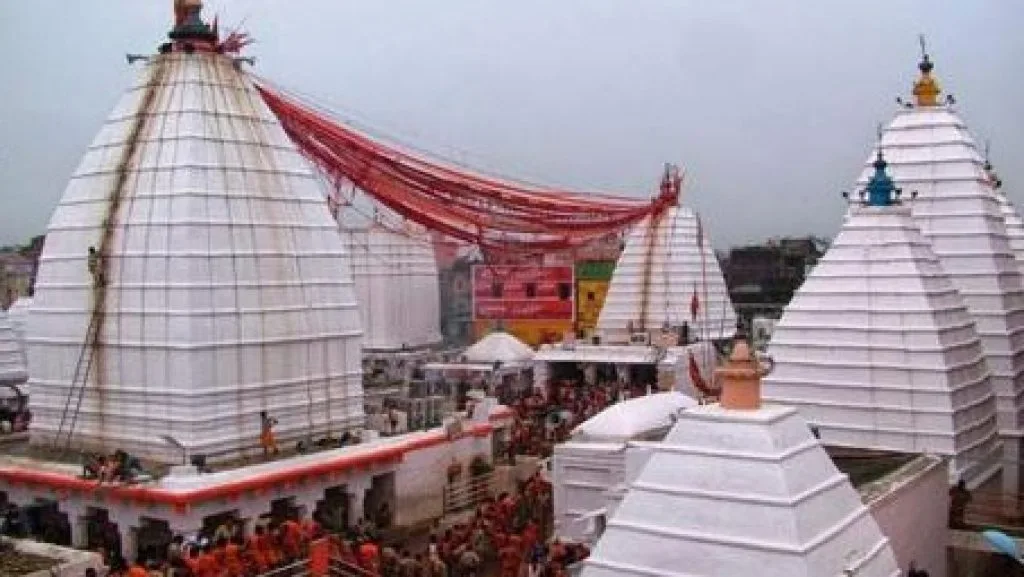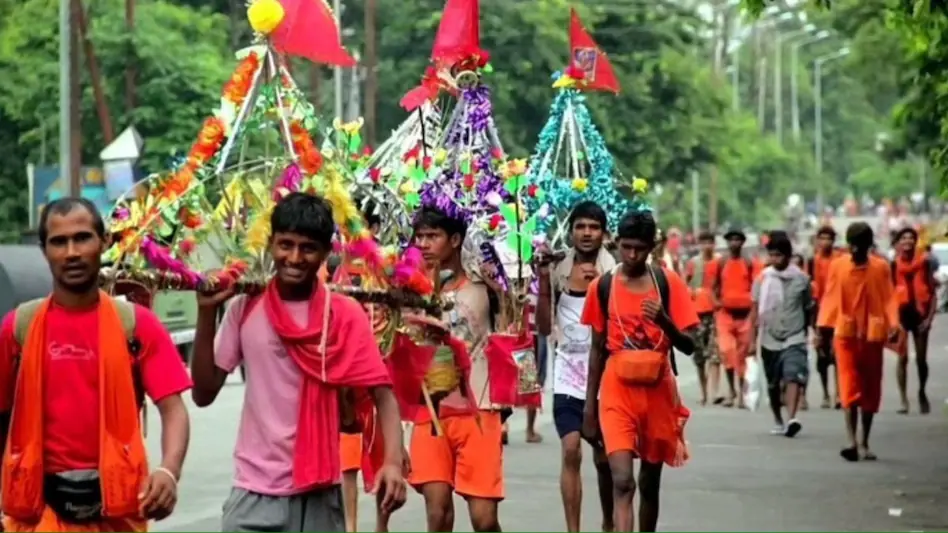According to the Hindu calendar, the Kanwar Yatra begins in the month of Sawan. I will explain what happens in the Kanwar Yatra and which places in India are most associated with this pilgrimage.
What is the Kawad Yatra?
The Kanwar Yatra is a pilgrimage performed by devotees of Lord Shankar (Shiva) in the Hindu religion. “Kanwar” refers to a bamboo pole with vessels hanging from either end by a rope, used to carry holy water. This festival spans the entire month of Sawan. Pilgrims, often dressed in saffron-colored clothes, come from faraway places to participate in the Yatra. During this journey, devotees walk long distances to offer the holy water to Lord Shankar. It is one of the largest festivals in India, comparable to Ramadan for Muslims. During Sawan, Hindu temples are especially crowded on Mondays.

Haridwar (Harki Pauri)
In the Kanwar Yatra, many people from Delhi, Uttar Pradesh, Uttarakhand, Himachal Pradesh, Haryana, Punjab, and other regions travel to Haridwar. They collect Ganga water and carry it to the Shiva temples near their homes. Both men and women participate, wearing saffron-colored clothes. Participants often travel with DJs, creating a vibrant atmosphere. Along the way, they must follow certain rules, such as not touching the Kanwar or the water with unclean hands, as this would render the water impure. The journey begins at Harki Pauri in Haridwar, and pilgrims often travel on foot. Just as “Radhe Radhe” is chanted in Mathura’s Vrindavan, “Bol Bam” is the chant of choice during the Kanwar Yatra, and people address each other as “Bam.”

Types of Kanwar Yatra
There are two types of Kanwar Yatra:
- Traditional Kanwar Yatra: In this version, pilgrims carry the water back to their homes, taking 7-8 days for the journey. Both young and old participate, moving at a comfortable pace.
- Dak Kanwar Yatra: In this more strenuous version, known as “Dak Bam,” participants run with the water from Haridwar to the Shiva temple near their homes. Typically, a group of ten people participates, with one person running with the water while the others walk alongside. This version requires excellent physical fitness.
Deoghar (Baba Baijnath Dham)
Deoghar is a district in Jharkhand where Baba Baijnath Dham is located. Pilgrims from all over India visit during Sawan. According to legend, Ravana attempted to carry Lord Shiva to Lanka from Mount Kailash. During the journey, he experienced a sudden urge and handed the Shiva Linga to a cowherd, instructing him to hold it temporarily. When Ravana returned, he found that the Shiva Linga had been placed on the ground. Despite his efforts, Ravana could not lift it again and eventually dug it into the ground with his finger. Today, this site is known as Baba Baijnath in Kalyuga.

Deoghar Kawad Yatra
In the Deoghar Kanwar Yatra, pilgrims from Bihar, Jharkhand, Uttar Pradesh, Chhattisgarh, and West Bengal carry water from Sultanganj in Bihar, covering a distance of 105 km to Deoghar’s Baba Baijnath Dham, where they offer the water to the Shiva Linga. This Kawad Yatra resembles the one in Haridwar, with two types of journeys: a traditional one and a Dak Kanwar Yatra, where participants walk swiftly with the water.

